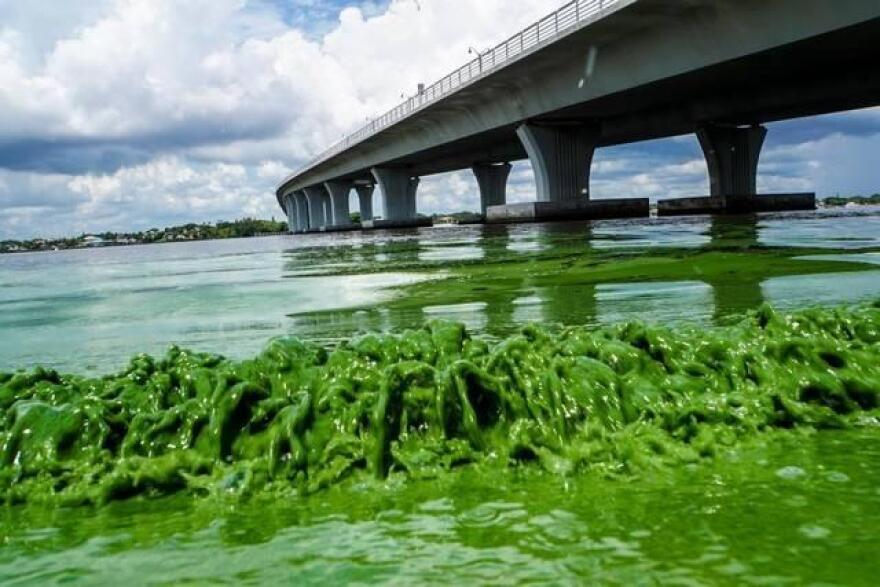The greater Everglades is a mosaic of habitats: sawgrass marshes, seagrass beds, pine rockland forest and hardwood hammocks coexist in an ecosystem stretching from just south of Orlando to the Florida Keys.
Participants at an annual Everglades restoration conference say to expedite much-needed restoration projects, there needs to be ongoing collaboration among groups as diverse as the ecosystem itself.
"We all have to operate as one country," Ron Bergeron, a former commissioner for Florida's Fish and Wildlife Conservation Commission, said Friday to the environmental advocates, water managers, state and federal officials and tribe members gathered for the 33rd Everglades Coalition conference. "We have to recognize the shared adversity, the shared impacts throughout the global Everglades."
Read more: Everglades 101: Just How Does This Thing Work, Anyway?

The theme of this year's conference was "Everglades for Everyone: Building Connections for Progress," and organizers said they're trying to include stakeholders who have often been left out of restoration planning conversations.
Negotiations over a reservoir intended to reduce blue-green algae blooms on Florida's coasts has caused an eruption of frustration: agricultural communities around Lake Okeechobee worry they'll lose land critical to their farms and tax base; environmental groups fear the proposal falls short of what's needed to help restore natural water flow to dehydrated Florida Bay; and members of the Miccosukee and Seminole tribes say their identities and ways of life are under threat from conservation efforts that neglect their sovereignty.
“The Coalition, certainly the Sierra Club, and many in this advocacy community have failed in the past. We have failed to listen to and engage in a meaningful way with the communities and the tribes represented today,” said Cris Costello, an organizer with the Sierra Club, which hosted the conference. “Today is the beginning of the new day.”
A Friday afternoon panel on “expanding the dialogue” featured speakers from the tribes and agricultural communities, who described the challenges they experience for having being drowned out in the past by state and federal agencies and the sugar industry.
Michael Frank, a member of the Miccosukee tribe, explained that the Everglades are the Miccosukees’ homeland and that as a separate nation within the United States, the tribe will push for the conservation efforts it believes are best — even if those plans are at odds with the plans of the state of Florida and the U.S. government.
“We are fighting for our home, for our land,” he said. “If our culture, our language, our traditional way dies, we die. We’re just dead people, walking around,” he said.
Frank said the tribe supports federal and state conservation efforts as long as those behind the efforts respect the Miccosukees’ goals and their right to self-determination.
“We want somebody who loves the Everglades, who loves our people,” he said. “If they don’t love the people or the land or the water or our culture, they’re not really helping us.”
The audience heard a similar message from Paul Carlisle, the manager for rural Glades County, who expressed frustration that his community loses out on tax revenue when conservation plans allow the state or federal government to take over Glades land. Historically, water managers have put storage and filtration areas at the center of the state in part because it’s less populated — and has less infrastructure to build around — than the coasts.
“They come and take the land out of the tax rolls… but they pay us a pittance, and it’s not even guaranteed that we even get paid,” Carlisle said. “It takes jobs — needed jobs to provide services. So if you get in a car wreck in Glades County, you better hope we have someone on duty to take you to the hospital.
“Oh wait,” he added, “We don’t have one of those, either.”

Carlisle said affluent communities like Orlando and the greater Miami area should face more stringent development requirements, like being prepared to deal with a 100- or 500-year flood scenario, so there’s less need for them to send water to inland storage areas after heavy rains.
Also on the minds of conference participants: the ongoing challenge of trying to expedite Everglades restoration and preservation efforts. The multi-decade, $17 billion Comprehensive Everglades Restoration Plan (CERP) was first approved in 2000, but 18 years later, none of its 68 projects is complete. Speakers voiced concern about the slow rate of funding for projects, many of which are overseen jointly by the state and federal government. There was widespread agreement that the funding conversation is all the more urgent because climate change and sea level rise pose threats that weren’t necessarily accounted for when CERP was developed.
“Draw a line from Port St. Lucie over to Fort Meyers and recognize all the voters that exist south of that line, all the way to Key West, Florida,” said George Neugent, a Monroe County Commissioner. “Why we can’t elect people who are paying attention to our environmental issues and Everglades restoration to move forward in a funded and uninterrupted process is just beyond me.”
Many in the crowd applauded. Officials and the groups that support the water storage reservoir south of Lake Okeechobee are hoping to get about $800 million in funding from the federal government for the project.



